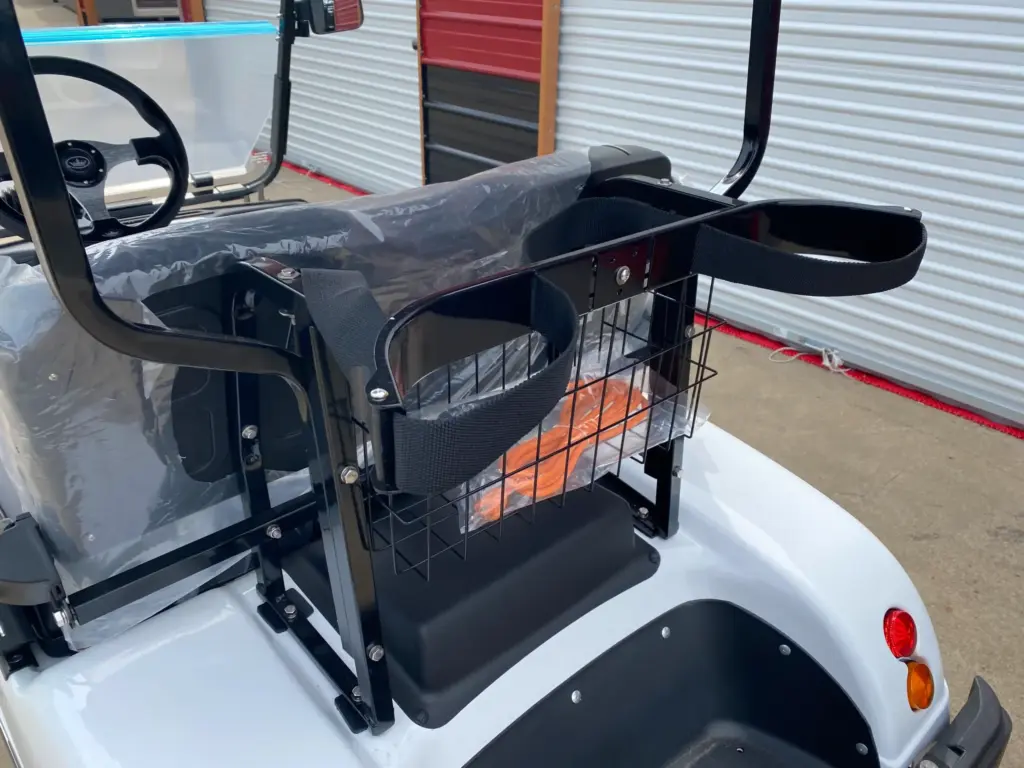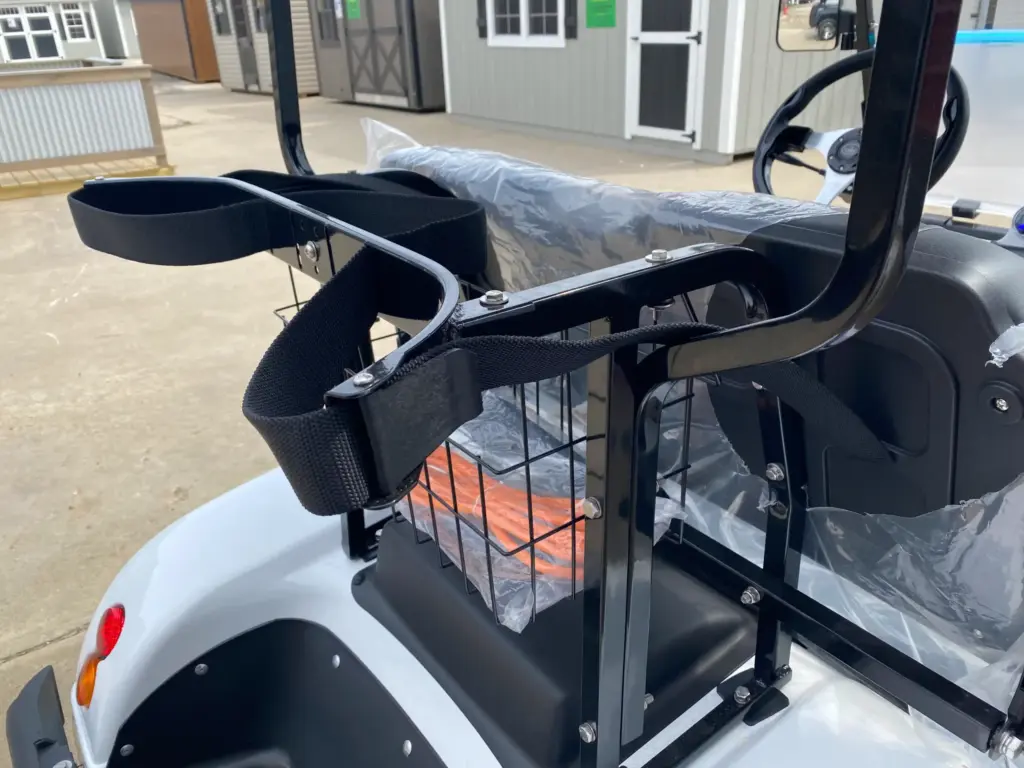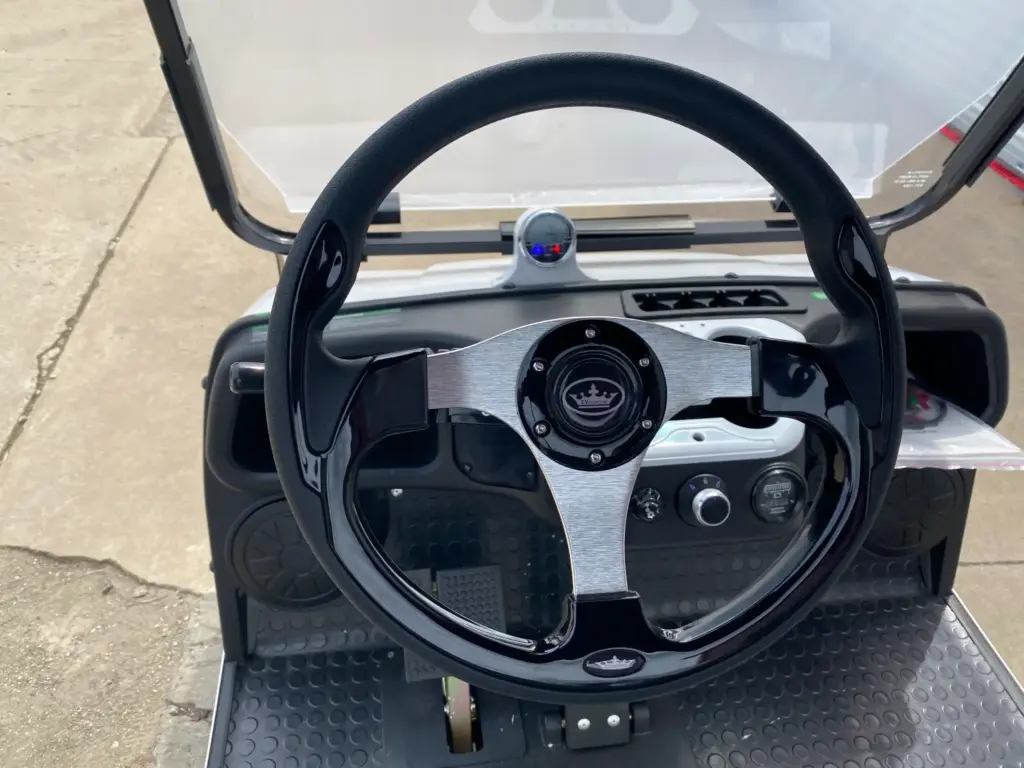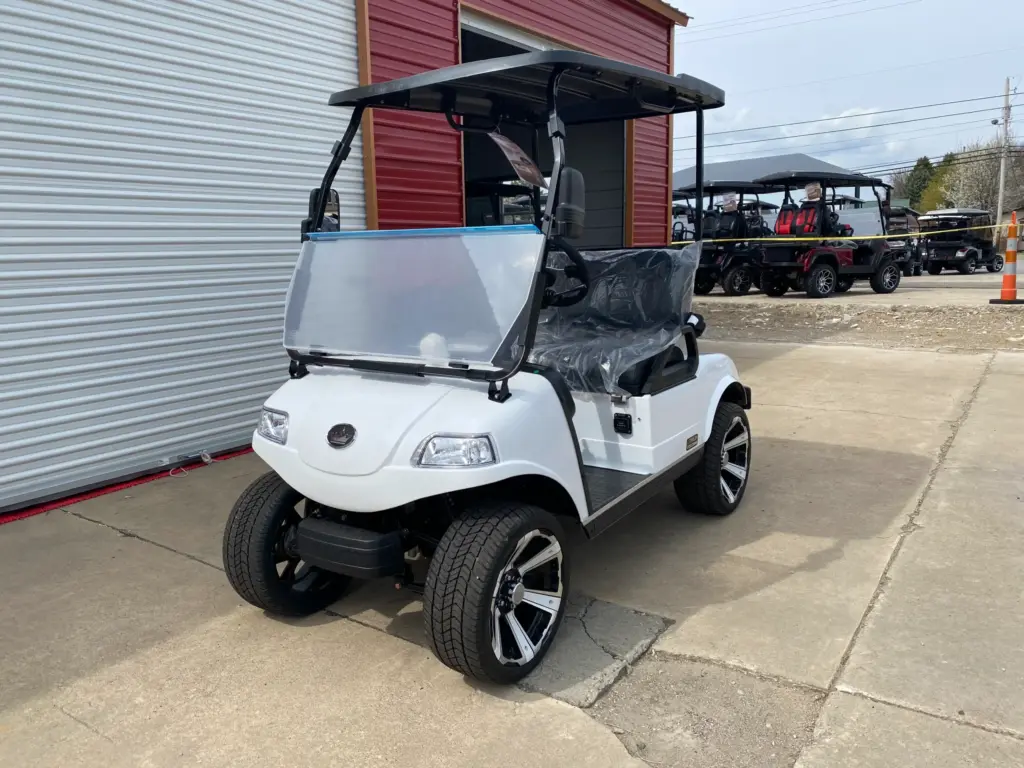Golf carts may appear small and simple at first glance, but their size plays a major role in how they are used, stored, and transported. For buyers, owners, or even casual users, one of the most important details is the length of a golf cart. Understanding cart length helps determine whether it will fit into a garage, onto a trailer, or even in the back of a truck bed. It also influences maneuverability, passenger capacity, and customization options. This guide will explore everything you need to know about golf cart length, from standard dimensions to special cases, and why these measurements matter for ownership and use.

Standard Length of a Golf Cart
The most common golf carts, which are designed as two-seaters, typically measure about eight feet in length. This standard size has been adopted across many brands because it provides a balance between passenger comfort, compactness, and utility. A cart of this size can easily maneuver around golf courses, fit into smaller garages, and be transported with relative ease. For many buyers, this measurement is the baseline when thinking about the length of a golf cart.
Variations by Seating Capacity
The length of a golf cart changes significantly depending on how many passengers it is designed to carry. Two-seater models average around 96 inches long, but when you move to four-seaters, the length usually increases to 108 or even 110 inches. These carts include a rear-facing seat or a longer body frame, which naturally requires more space. Six-passenger carts, often used in resorts or large properties, can stretch to 12 feet or more. The increase in length affects turning radius, weight, and storage requirements, which is why owners should carefully consider seating needs before purchasing.

Lifted and Customized Golf Carts
Customizations can also impact the length of a golf cart. Lifted carts, which are popular for off-road or rugged property use, may include extended frames, larger tires, and longer bumpers. Custom seating arrangements or cargo attachments also add to the overall size. While the differences may only add a few inches, they can make a meaningful difference when trying to fit a cart into a garage or trailer. Owners who plan to customize should keep in mind that these modifications could push their cart beyond standard dimensions.
Why Golf Cart Length Matters
The length of a cart is more than just a number—it directly influences usability. A shorter cart is easier to maneuver in tight spaces, such as crowded neighborhoods or storage sheds. Longer carts, while offering more passenger capacity, may require more careful planning for transport and storage. For example, answering questions like whether a cart will fit in a truck bed or on a trailer depends directly on its length. Understanding these measurements helps prevent frustration and ensures that the cart can be used safely and conveniently.

Storage Considerations
Many new owners discover that the length of a golf cart becomes a key factor when storing the vehicle. Standard residential garages can typically accommodate two-seater carts easily, but four- or six-seater models may require creative arrangements. Some owners choose to build dedicated sheds or carports designed to house golf carts, while others use extended garages. Proper measurement is essential to ensure that doors can close fully and that there is still room to move around the vehicle once it is parked inside.
Transporting Golf Carts
Another reason why length of a golf cart matters is transport. If you plan to take your cart to a campground, resort, or different property, you may need to move it on a trailer or inside a truck bed. Since most standard carts are eight feet long, they can often fit inside long truck beds but rarely inside short beds. Four- and six-seater carts often require trailers, which are designed with extended platforms to carry larger vehicles. Planning for this in advance ensures that transportation remains safe and legal.

Impact on Maneuverability
The length of a golf cart also affects how it handles on different terrain. Shorter carts are easier to maneuver, with tighter turning radii that make them suitable for golf courses and residential communities. Longer carts, especially six-seater models, may require more space to turn and navigate. While they are excellent for transporting groups of people, they are less suited for narrow paths or compact environments. This trade-off between passenger capacity and maneuverability is one of the most important considerations when choosing a cart.
Comparing Different Brands
While most manufacturers stick to the eight-foot standard for two-seater carts, there are slight variations across brands. Club Car, Yamaha, and E-Z-GO each design carts with slightly different body frames, bumpers, and accessories. For example, some models may measure 94 inches while others extend closer to 100 inches. The length of a golf cart is therefore not a fixed number but a general range. Buyers should always check the specifications of the exact model they are interested in to avoid surprises during storage or transport.

Street-Legal and Specialty Carts
Street-legal golf carts, or Low-Speed Vehicles (LSVs), often differ in size from traditional models. Because they include additional safety features like bumpers, mirrors, and lighting, the length of a golf cart in this category is often longer than the standard. Specialty carts designed for resorts, security patrol, or industrial use may also include longer frames to accommodate equipment or larger seating arrangements. These variations highlight why it is important not to assume that all carts are the same size.
External Insight
According to Mechanical Caveman, the average two-seater golf cart measures about 96 inches in length and 48 inches in width, while four-seaters add around 10 to 15 inches to that total. Their research emphasizes the importance of knowing exact dimensions before planning storage or transport, since even a few inches can make the difference between a smooth fit and a major hassle. This perspective reinforces why understanding golf cart length is crucial for practical ownership.

Future Trends in Golf Cart Design
As golf carts expand beyond the course into neighborhoods and businesses, their designs are evolving. Manufacturers are experimenting with modular frames that can extend or contract depending on passenger needs. Some companies are developing foldable or collapsible accessories that help manage overall length. As technology advances, the length of a golf cart may become more adaptable, offering owners greater flexibility without sacrificing comfort or safety. These innovations could redefine how length influences ownership in the future.
Conclusion: Length of a Golf Cart
So, what is the length of a golf cart? For standard two-seater models, the answer is about eight feet. Larger four-seaters typically measure closer to nine feet, while six-passenger carts can extend to 12 feet or more. Customizations, brand variations, and specialized designs can all influence exact measurements. Understanding these differences is essential for storage, transportation, and usability. By measuring carefully and considering your needs, you can select a golf cart that fits your lifestyle and avoids the frustrations of poor planning. Whether for recreation, property management, or daily convenience, knowing the length ensures you get the most from your investment.
At Hartville Golf Carts, we emphasize the importance of understanding dimensions as part of ownership. Just as performance and power matter, so do practical factors like size. With the right information, every buyer can make a confident decision that matches both their immediate needs and future plans.








